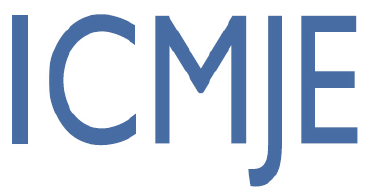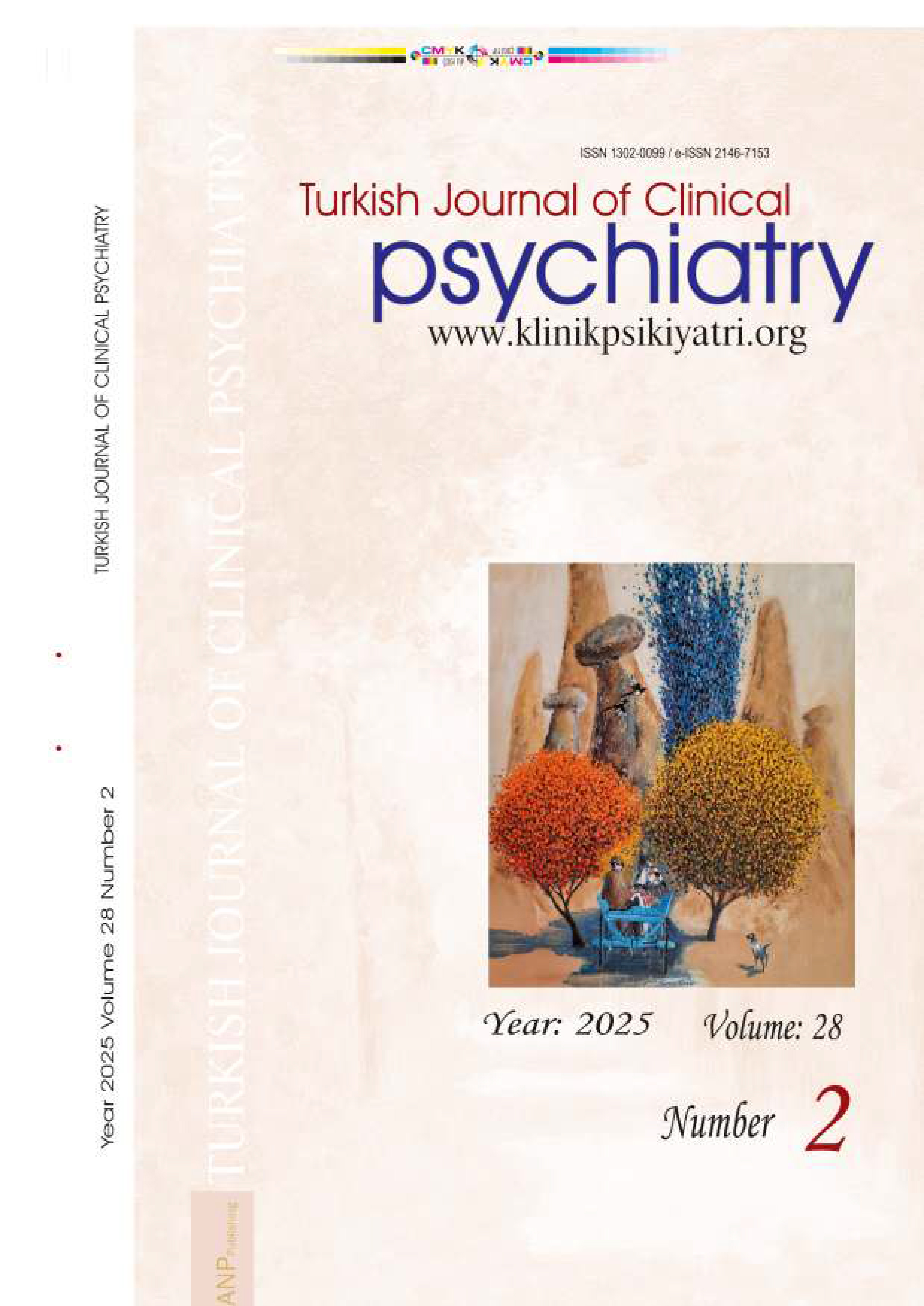





Volume: 1 Issue: 1 - 1998
| REVIEW | |
| 1. | Genetics of Affective Disorders Ender TANER, Nevzat YUKSEL Pages 5 - 12 First evidences on the role of genetic effect in the etiology of affective disorders were put forward by the family, twin and adoption studies and then effects of genetic have been researched by the means of advanced genetic studies. These researches lead to the development of recent concepts in psychiatric genetics like ‘anticipation’ (increase in disease severity and / or decrease in age of onset in successive generations) and ‘parent of origin effect’. Identification of large intervals oftrinucleotid repeats in affected individuals when compared with control subjects, implicated the role of trinucleotid repeats in the etiology of bipolar disorder which at the same time seems to be the cause of anticipation. It has been shown that morbidity risk is significantly higher in off springs of affected mothers when compared with offsprings of affected fathers which is defined as ‘parent of origin effect’. Linkage analysis has been used to define the chromosomal locations, linkage has been reported on many chromosomes but only the linkage on chromosome 18 has been replicated by other genetic studies. Although the linkages on other chromosomes were not replicated by other studies, they were not denied otherwise. If the bipolar disorder is accepted as a disorder of a complex inheritance, difficulty to find only one or shared chromozomal loci in heterogen samples could be understood. Therfore one chromozomal linkage in one family could not be proven in other families. This limitation could be passed by larger and more homogeneous sample size. Informations in hand indicate that genetic effect is important for affective disorders and encourage for further studies. |
| 2. | Dissociative Identity Disorder: Diagnosis and Nosolo- gical Problems Vedat ŞAR Pages 13 - 21 Dissociative identity disorder is the most severe and chronic form of dissociative disorders. In contrast of imagined previously, its complete form defined in the DSM-IV is at least as frequent as schizophrenic disorder in the community. Recently, extensive research and clinical work has been conducted on dissociative identity disorder in Turkey. This trauma related disorder requires specific psychotherapeutic intervention considering the diagnosis and etiology; however, it is not uncommon for these patients to fit diagnostic criteria of several other psychiatric disorders at the same time. This excessive descriptive comorbidity can be solved accepting dissociative identity disorder as a supraordinate diagnosis of traumatic origin. This solution needs extensive revision in classification systems currently in use. Dissociative identity disorder challenges the current psychiatric classification and nosology. |
| 3. | Abstract The Clinical Features and Treatment Implica- tions of Avoidant Personality Disorder levent SEVİNÇOK, Çigdem Dereboy Pages 22 - 26 The research literature on avoidant personality disorder (APD) is quite sparse. APD shares many elements with the Axis I disorder social phobia (SF) as well as with the other personality disorders. Because of this overlap and the lack of extensive literature on the effective treatment of avoidant personality disorder, treatment strategy of APD is determined mostly by the known effective treatments of disorders with which avoidant personality disorder shares common elements, especially SF. In this article we presented clinical features and the diagnostic matters of APD. We also discussed the different treatment approaches in respect to its relationship especially with social phobia. |
| RESEARCH ARTICLE | |
| 4. | The Role of HLA Antigens in Bipolar Mood Disorder Alp Uçok, Ugur AKAR, Güliz Özgen Uçok, Olcay YAZICI Pages 27 - 30 This study compared the frequencies of HLA antigens of subjects with bipolar disorder to subjects with no history of any mental illness. Diagnoses were rendered according to DSM-III-R criteria. A total of 50 bipolar I subjects were compared to 100 never-ill subjects on HLA loci A, B, C, DR, DQ. In bipolar I patients, antigens of HLA B7, DR 11 and DQ7 were more frequent than control group. These findings indicate that at least some HLA antigens might be related to bipolar disorder. |
| REVIEW | |
| 5. | Neurobiology of Schizophrenia: A Short Overview Murat REZAKi Pages 31 - 34 The aim of this short overview is to give a perspective on one of the fastest developing fields of psychiatric history, neurobiology of schizophrenia. A short summary of anatomical findings on prefrontal korteks and temporal lobes in schizophrenia is followed by the findings on neurotransmitter systems, dopamine, serotonin and glutamate in particular. When those findings are put together, it seems that we are at the beginning of a long but hopeful quest for understanding pathophysiology of schizophrenia. |
| RESEARCH ARTICLE | |
| 6. | The Comparison of Sociodemographic, Clinical and Phenomenological Characteristics of the Patients Diagnosed as Obsessive Compulsive Disorder in Turkey and France Ertan Tezcan, Bruno Millet, Murat Kuloğlu Pages 35 - 41 The aim of our study was to compare sociodemographic, clinical and phenomenological characteristics and to determine cross cultural differences in patients diagnosed as obsessive compulsive disorder (OCD) in Elazığ and Paris which have opposite features about psyhosocial and cultural characteristics. The study group included totally 60 patients who had applied to Psychiatry Department of Medicine Faculty of Fırat University and Psychiatry Department of Paris Hospitalo Universitaire de Sainte-Anne firstly, and diagnosed OCD according to DSM-IV criteria. According to DSM-IV diagnostic criteria, axis I diagnosis other than OCD was determined and a form evaluating sociodemographic and clinical properties was applied to patients. The education level was significantly higher in French patients than Turkish patients. In regard to occupation, housewifes and officials in Turkish patients, workers and free workers in French patients were obvious. Turkish patients were usually married, contrary French patients were single. Depressive disorders in Turkish patients and learned alcohol abuse in French patient were statistically significant comorbid diagnosis. Dirty, dirt and contamination obsessions and cleaning-washing compulsions were most prevalent obsessions and compulsions in both groups. In Turkish female patiens dirt and contamination obsessions and cleaning-washing compulsions, in Turkish male patiens religious obsessions and praying compulsions, in French male patients harming obsessions were found statistically significant. |
| REVIEW | |
| 7. | Neuroimaging in Child and Adolescent Neuropsychiat- ric Disorders Selahattin SENOL, Hiilya ONCULOGLU Pages 42 - 50 Techniques related to imaging of the nervous system, due to their necessity of exposure to radiation, leads to problems of subject safety in studies. Therefore neuroimaging was used in limited number of studies in neuropsychiatric disorders of children and adolescents when compared with adults. By the means of safer procedures like magnetic resonance imaging, studies related to brain function and structure are increased in number. In this paper neuroimaging finding in neuropsychiatric disorders of child and adolescents will be reviewed. Results of neuroimaging studies on dyslexia, some disorders which yield to mental retardation (fragile X, Down syndrome), Rett syndrome, autism, obsessive- compulsive disorder, attention deficit hyperactivity disorder, Tourette syndrome and schizophrenia will be summarized. |
| CASE REPORT | |
| 8. | Evaluation of Clinic and Therapy Course in the Aspect of Self Psychology: an Adolescent Case Study Elvan KARACAN, Cüneyt İşcan, Şahnur Şener Pages 51 - 55 Nowadays different theories and practices could be used in psychotheurapeutic approach. Although one therapy course could be performed according to only one theory, ecletic techniques could also be prefered. In adolescent therapy clinical features and therapy could be based on different theories. This paper is related to clinical aspect and therapy course of an adolescent case whose psychotherapy was performed for 2 years in Gazi University Faculty of Medicine Child Psychiatry department. This case will be discussed according to theory of self psychology. |










